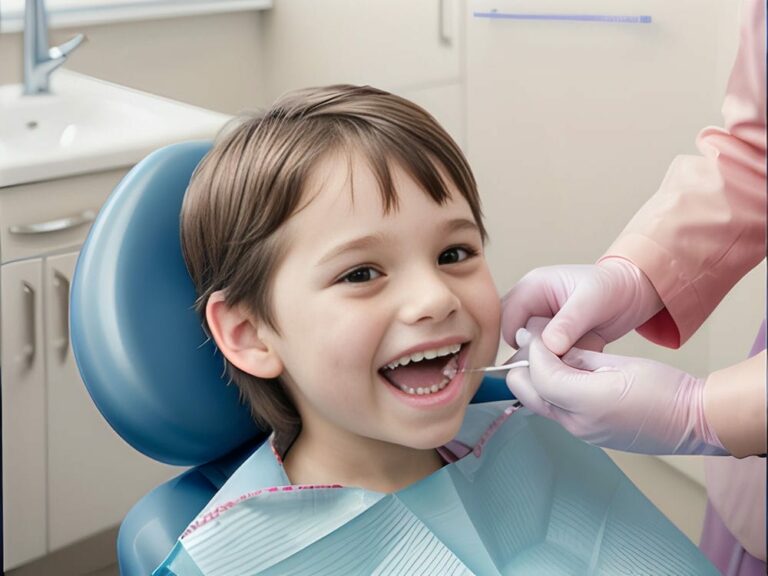Transforming Dental Education: Exploring Innovative Approaches
Transforming Dental Education: Exploring Innovative Approaches
In recent years, dental education has undergone a significant transformation as educators seek to enhance the learning experience and better prepare future dental professionals. This shift towards innovative teaching strategies in dentistry is driven by the recognition that traditional methods may not fully meet the evolving needs of students or adequately equip them with the skills required for modern dental practice. As a result, educators are exploring novel approaches to dental education that incorporate technology, interprofessional collaboration, and experiential learning.
One of the key areas of focus in transforming dental education is the integration of technology into the curriculum. Digital advancements have revolutionized various aspects of dentistry, from diagnosis and treatment planning to patient communication and record-keeping. Therefore, it is crucial for dental students to become proficient in using these tools effectively. Innovative teaching strategies leverage technology to provide students with hands-on experience using cutting-edge equipment and software, preparing them for the digital landscape they will encounter in their professional careers.
Another aspect being explored is interprofessional collaboration within dental education. Recognizing that oral health is interconnected with overall health, educators are incorporating opportunities for collaboration between dental students and other healthcare professionals such as physicians, nurses, and pharmacists. This interdisciplinary approach allows students to gain a broader understanding of healthcare systems and develop essential teamwork skills that will benefit them in their future practice. By working together on cases or projects, students learn how to communicate effectively across disciplines and achieve comprehensive patient care.
Experiential learning is yet another transformative approach in dental training that emphasizes active participation and real-world applications. Rather than relying solely on lectures and textbooks, students engage in hands-on activities such as simulated clinical experiences or community outreach programs. These opportunities enable learners to apply their knowledge in a practical setting while also developing critical thinking skills and building confidence. Experiential learning fosters a deeper understanding of concepts through active engagement, making it an effective method for preparing future dental professionals.
In conclusion, the field of dental education is witnessing a shift towards innovative teaching strategies that prioritize the integration of technology, interprofessional collaboration, and experiential learning. These transformative approaches aim to equip students with the skills needed to thrive in modern dental practice. By embracing these novel methods, educators can ensure that future dental professionals are well-prepared to meet the evolving needs of patients and contribute to advancing oral health care.
Embracing Technology: Advancements in Dental Education and Training
Forward-thinking dental education is continuously evolving to meet the demands of a changing healthcare landscape. Emerging trends in dental education focus on innovative approaches to curriculum design, ensuring that students are well-prepared for modern dental practice. These approaches incorporate technology, interprofessional collaboration, and experiential learning to provide a comprehensive and dynamic educational experience.
Integrating technology into the dental curriculum is a key aspect of forward-thinking dental education. With digital advancements shaping the field of dentistry, it is essential for students to develop proficiency in using cutting-edge tools and software. By incorporating technology into their training, students gain hands-on experience with digital equipment and learn how to leverage these tools effectively in patient care. This prepares them for the digital landscape they will encounter in their professional careers.
Furthermore, emerging trends in dental education emphasize the importance of interprofessional collaboration. Recognizing that oral health is interconnected with overall health, educators are providing opportunities for dental students to collaborate with other healthcare professionals. This interdisciplinary approach allows students to gain a broader understanding of healthcare systems and develop essential teamwork skills. By working together on cases or projects, students learn how to effectively communicate across disciplines and provide comprehensive patient care.
Innovative curriculum in dentistry also emphasizes experiential learning. This approach moves away from traditional lecture-based teaching methods and encourages active participation and real-world applications. Through simulated clinical experiences or community outreach programs, students have the opportunity to apply their knowledge in practical settings. This hands-on approach fosters critical thinking skills, builds confidence, and deepens understanding of concepts. It prepares future dental professionals for the challenges they will face in their careers.
In summary, forward-thinking dental education embraces emerging trends by incorporating technology, promoting interprofessional collaboration, and emphasizing experiential learning. These innovative approaches ensure that students are equipped with the necessary skills and knowledge to thrive in modern dental practice. By staying at the forefront of educational advancements, dental educators can prepare future professionals who are ready to contribute to the advancement of oral health care.
Cutting-Edge Techniques: Revolutionizing Dental Education
Next-generation dental training is revolutionizing the field of dentistry by introducing innovative learning methods. These alternative approaches to dental education are designed to enhance student engagement and improve knowledge retention. One such method is the use of virtual reality (VR) technology, which allows students to practice dental procedures in a realistic simulated environment. By immersing themselves in these virtual scenarios, students can develop their clinical skills and gain confidence before working on actual patients.
Another cutting-edge technique in dental education is the implementation of gamification. This involves incorporating game-like elements into the learning process to make it more interactive and enjoyable. For example, educational apps or online platforms can present dental cases as challenges or puzzles that students must solve. By engaging in these gamified activities, students not only have fun but also learn important concepts and techniques in a dynamic and memorable way.
Furthermore, innovative learning methods in dentistry include the use of problem-based learning (PBL). Instead of relying solely on lectures, PBL encourages students to actively engage with real-world scenarios and apply their knowledge to solve problems. Through group discussions and research, students develop critical thinking skills and become independent learners. This approach fosters a deeper understanding of dental concepts and prepares students for the complexities they will encounter in their professional careers.
By embracing these next-generation dental training methods and alternative approaches to education, dental schools are equipping their students with the skills needed for success in modern dentistry. These innovative techniques not only enhance knowledge acquisition but also promote critical thinking, teamwork, and adaptability – qualities essential for providing high-quality patient care in an ever-evolving healthcare landscape. As dental education continues to evolve, it is crucial for educators to stay abreast of these advancements and incorporate them into curricula to ensure that future generations of dental professionals are well-prepared for their roles.
Beyond Traditional Methods: Progressive Approaches to Dental Training
Innovative tools for dental training are revolutionizing the field of dentistry, providing students with new opportunities to enhance their learning experience. One such tool is virtual reality (VR) technology, which allows students to practice dental procedures in a realistic simulated environment. By immersing themselves in these virtual scenarios, students can develop their clinical skills and gain confidence before working on actual patients. This innovative approach not only enhances knowledge retention but also improves student engagement.
Another progressive approach to dental education is the implementation of innovative assessment methods. Traditionally, assessments in dentistry have relied heavily on written exams and practical demonstrations. However, new approaches are being introduced that allow for more comprehensive evaluation of students’ skills and competencies. For example, objective structured clinical examinations (OSCEs) provide a standardized way to assess clinical skills by simulating real-life scenarios. These assessments ensure that students are well-prepared for the challenges they will face in their professional careers.
Disruptive approaches to dental education are also being embraced to create a more dynamic and interactive learning environment. Problem-based learning (PBL), for instance, encourages active engagement with real-world scenarios and promotes critical thinking skills. Through group discussions and research, students develop a deeper understanding of dental concepts and learn how to apply their knowledge to solve complex problems. This approach prepares them to adapt to the ever-evolving healthcare landscape and become independent learners.
By incorporating innovative tools for training, introducing new assessment methods, and embracing disruptive approaches to education, dental schools are equipping their students with the skills needed for success in modern dentistry. These progressive techniques not only enhance knowledge acquisition but also promote critical thinking, teamwork, and adaptability – qualities essential for providing high-quality patient care. As the field of dentistry continues to evolve, it is crucial for educators to stay abreast of these advancements and incorporate them into curricula to ensure that future generations of dental professionals are well-prepared for their roles.
Integrating Modern Technology: Enhancing Dental Education
Innovative continuing education in dentistry is essential for keeping up with the ever-evolving field of dental care. Holistic approaches to dental training are now being implemented to provide a more comprehensive learning experience for students. These approaches go beyond traditional methods and focus on incorporating innovative tools and techniques.
One such innovation is the use of simulation technology in dental education. Simulations allow students to practice various procedures in a realistic virtual environment, enhancing their clinical skills and building confidence before working on actual patients. This immersive experience not only improves knowledge retention but also increases student engagement, as they can actively participate in hands-on learning.
Another aspect of innovative continuing education in dentistry is the emphasis on holistic approaches. This means going beyond just teaching technical skills and focusing on developing well-rounded dental professionals. Students are encouraged to think critically, communicate effectively, and work collaboratively with peers. By incorporating problem-based learning and group discussions, students gain a deeper understanding of dental concepts and learn how to apply their knowledge in real-life scenarios.
By embracing innovative simulation technology and implementing holistic approaches to dental training, educators are equipping future dental professionals with the necessary skills for success in modern dentistry. These progressive techniques enhance knowledge acquisition while promoting critical thinking, teamwork, and adaptability – qualities essential for providing high-quality patient care. As the field continues to advance, it is crucial for educators to stay abreast of these advancements and incorporate them into curricula to ensure that students are well-prepared for their roles as dental professionals.
Creative Teaching Methods: Inspiring Innovation in Dental Training
Innovative research in dental education is paving the way for new and improved approaches to training future dental professionals. One such approach is experiential learning, which involves hands-on experiences and real-life scenarios to enhance students’ understanding and application of dental concepts. This method goes beyond traditional lectures and textbooks, allowing students to actively engage with the material and develop practical skills.
Through experiential learning, students are able to work on simulated patients, participate in case studies, and collaborate with their peers. This immersive experience not only helps them build technical skills but also fosters critical thinking, problem-solving abilities, and effective communication. By engaging in these interactive activities, students gain a deeper understanding of the complexities of dentistry and learn how to adapt their knowledge to different situations.
Innovative leadership in dental education is also crucial for inspiring innovation in dental training. Educators who embrace a forward-thinking mindset can introduce new teaching methods, incorporate cutting-edge technology into curricula, and encourage students to explore creative solutions to challenges in dentistry. By providing a supportive environment that encourages experimentation and exploration, educators can nurture the next generation of dental professionals who will drive advancements in patient care.
By combining innovative research, experiential learning, and innovative leadership in dental education, we can ensure that future dental professionals are equipped with the necessary skills to thrive in an ever-evolving field. These approaches not only enhance knowledge acquisition but also promote critical thinking, adaptability, teamwork, and creativity – qualities that are essential for providing high-quality patient care. As the field continues to evolve at a rapid pace, it is imperative for educators to stay at the forefront of these advancements and inspire innovation in dental training.
Breaking Boundaries: New Avenues in Dental Education and Training
Innovative pedagogy in dentistry is revolutionizing the way dental professionals are trained. With a focus on patient-centered care, these new approaches aim to provide students with the skills and knowledge necessary to meet the evolving needs of patients. By incorporating innovative teaching methods and technologies into curricula, educators are able to create engaging and interactive learning experiences that prepare students for real-world dental practice.
One key aspect of innovative pedagogy in dentistry is the emphasis on patient-centered training. This approach recognizes that every patient is unique and requires individualized care. By incorporating patient simulations and case studies into dental education, students can develop their clinical skills while also learning how to effectively communicate and collaborate with patients. This hands-on experience allows them to understand the importance of tailoring treatment plans to each patient’s specific needs, ultimately improving outcomes and patient satisfaction.
Additionally, innovative technologies play a crucial role in modern dental education. Virtual reality simulations, 3D printing, and digital imaging are just a few examples of cutting-edge tools that can enhance students’ understanding and proficiency in various dental procedures. These technologies not only provide a more immersive learning experience but also allow students to practice techniques repeatedly until they achieve mastery. By embracing these advancements, educators can ensure that future dental professionals are well-equipped with the latest tools and techniques to deliver high-quality care.
As dental education continues to evolve, it is essential for educators to embrace innovative approaches that prioritize patient-centered training. By integrating experiential learning methods and leveraging advanced technologies, students can develop the skills necessary for success in their careers. Through this forward-thinking mindset, educators can inspire innovation in dental training and empower future professionals with the knowledge and abilities needed to provide exceptional care in an ever-changing healthcare landscape.
The Future of Dentistry: Exploring Revolutionary Approaches to Education
As dental education continues to evolve, it is important for educators to embrace innovative approaches that prioritize patient-centered training. By incorporating patient simulations and case studies into curricula, students can develop their clinical skills while also learning how to effectively communicate and collaborate with patients. This hands-on experience allows them to understand the importance of tailoring treatment plans to each patient’s specific needs.
In addition to patient-centered training, the integration of innovative technologies plays a crucial role in modern dental education. Virtual reality simulations, 3D printing, and digital imaging are just a few examples of cutting-edge tools that can enhance students’ understanding and proficiency in various dental procedures. These technologies provide a more immersive learning experience and allow students to practice techniques repeatedly until they achieve mastery.
By embracing these advancements in pedagogy and technology, educators can ensure that future dental professionals are well-equipped with the latest tools and techniques to deliver high-quality care. By inspiring innovation in dental training, educators empower future professionals with the knowledge and abilities needed to provide exceptional care in an ever-changing healthcare landscape. This forward-thinking mindset will pave the way for revolutionary approaches to education in dentistry.
Empowering Students: Advanced Techniques in Dental Training
The future of dental education lies in empowering students with advanced techniques and training methods. By adopting a student-centered approach, educators can create an environment that fosters independent thinking and problem-solving skills. This approach encourages students to take ownership of their learning journey and develop a deeper understanding of the concepts and principles behind dental procedures.
One innovative technique that can be employed is peer-to-peer learning. By creating opportunities for students to collaborate and learn from each other, educators can enhance their critical thinking abilities and promote teamwork. This approach not only strengthens their knowledge base but also prepares them for real-world scenarios where interdisciplinary collaboration is crucial.
Another effective technique is the use of interactive learning platforms. These platforms provide students with access to a wide range of resources, including virtual patient simulations, interactive case studies, and online forums for discussion. By incorporating these tools into the curriculum, educators can create a dynamic learning experience that allows students to apply theoretical knowledge in practical situations.
By embracing these advanced techniques in dental training, educators can empower students to become confident and competent professionals. Through student-centered approaches, such as peer-to-peer learning, and the integration of interactive learning platforms, future dentists will be equipped with the skills necessary to excel in their careers. As education continues to evolve, it is essential for educators to stay at the forefront of innovation and provide students with the best possible training opportunities.
A Comprehensive Approach: Combining Modern Techniques for Effective Dental Education
A Comprehensive Approach: Combining Modern Techniques for Effective Dental Education
In order to ensure effective dental education and training, it is crucial to adopt a comprehensive approach that combines various modern techniques. This approach can enhance students’ learning experience and equip them with the necessary skills to excel in their future careers.
One important aspect of this comprehensive approach is the integration of technology into dental education. By leveraging virtual reality and augmented reality tools, educators can create immersive learning experiences that simulate real-life dental procedures. This allows students to practice their skills in a safe and controlled environment, building confidence and competence before working on actual patients.
Furthermore, incorporating interdisciplinary collaboration into dental education can greatly benefit students. Dentistry is a field that often requires teamwork and coordination with other healthcare professionals. By providing opportunities for students to work alongside medical students, nurses, and other healthcare professionals, educators can promote a holistic understanding of patient care and foster effective communication skills.
By combining these modern techniques, such as technology integration and interdisciplinary collaboration, educators can create a comprehensive approach to dental education that prepares students for the challenges they will face in their professional careers. This approach not only ensures that students have the necessary knowledge and technical skills but also instills in them the importance of teamwork, critical thinking, and lifelong learning.
As the field of dentistry continues to evolve, it is essential for educators to adapt their teaching methods accordingly. By embracing innovative approaches to dental education and training, we can empower future dentists with the skills they need to provide high-quality patient care and make significant contributions to the field.
FAQs
Q: What are some innovative approaches to dental education and training?,
A: Some innovative approaches to dental education and training include simulation-based learning, virtual reality training, and online learning platforms.,
Q: How does simulation-based learning work in dental education?,
A: Simulation-based learning in dental education involves using lifelike manikins or virtual models to practice dental procedures in a controlled environment.,
Q: What is virtual reality training in dental education?,
A: Virtual reality training in dental education utilizes computer-generated simulations to provide a realistic dental experience and allow students to practice various procedures.,
Q: How can online learning platforms benefit dental education?,
A: Online learning platforms provide flexibility by allowing students to access educational materials and lectures remotely, which can enhance their learning experience and accommodate different schedules.,
Q: Are there any advantages to using innovative approaches in dental education?,
A: Yes, innovative approaches in dental education offer advantages such as improved skill development, enhanced learning outcomes, increased student engagement, and the ability to learn at one’s own pace.,
Q: Can simulation-based learning replace traditional clinical training in dental education?,
A: Simulation-based learning cannot completely replace traditional clinical training, but it can serve as a valuable supplement to enhance students’ skills before they work on real patients.,
Q: How does virtual reality training benefit dental students?,
A: Virtual reality training provides dental students with a realistic and immersive environment to practice procedures, allowing them to gain confidence and improve their skills in a risk-free setting.,
Q: Are there any limitations to online learning platforms in dental education?,
A: Some limitations of online learning platforms in dental education include the lack of hands-on experience, limited interaction with instructors, and the need for reliable internet access.,
Q: Can dental professionals use these innovative approaches for continuing education?,
A: Yes, dental professionals can utilize simulation-based learning, virtual reality training, and online learning platforms for continuing education to enhance their skills and keep up with advancements in the field.,
Q: How can dental schools implement these innovative approaches effectively?,
A: Dental schools can implement these innovative approaches effectively by investing in the necessary technology and resources, providing training to faculty and students, and incorporating them into the curriculum in a thoughtful and structured manner.
















